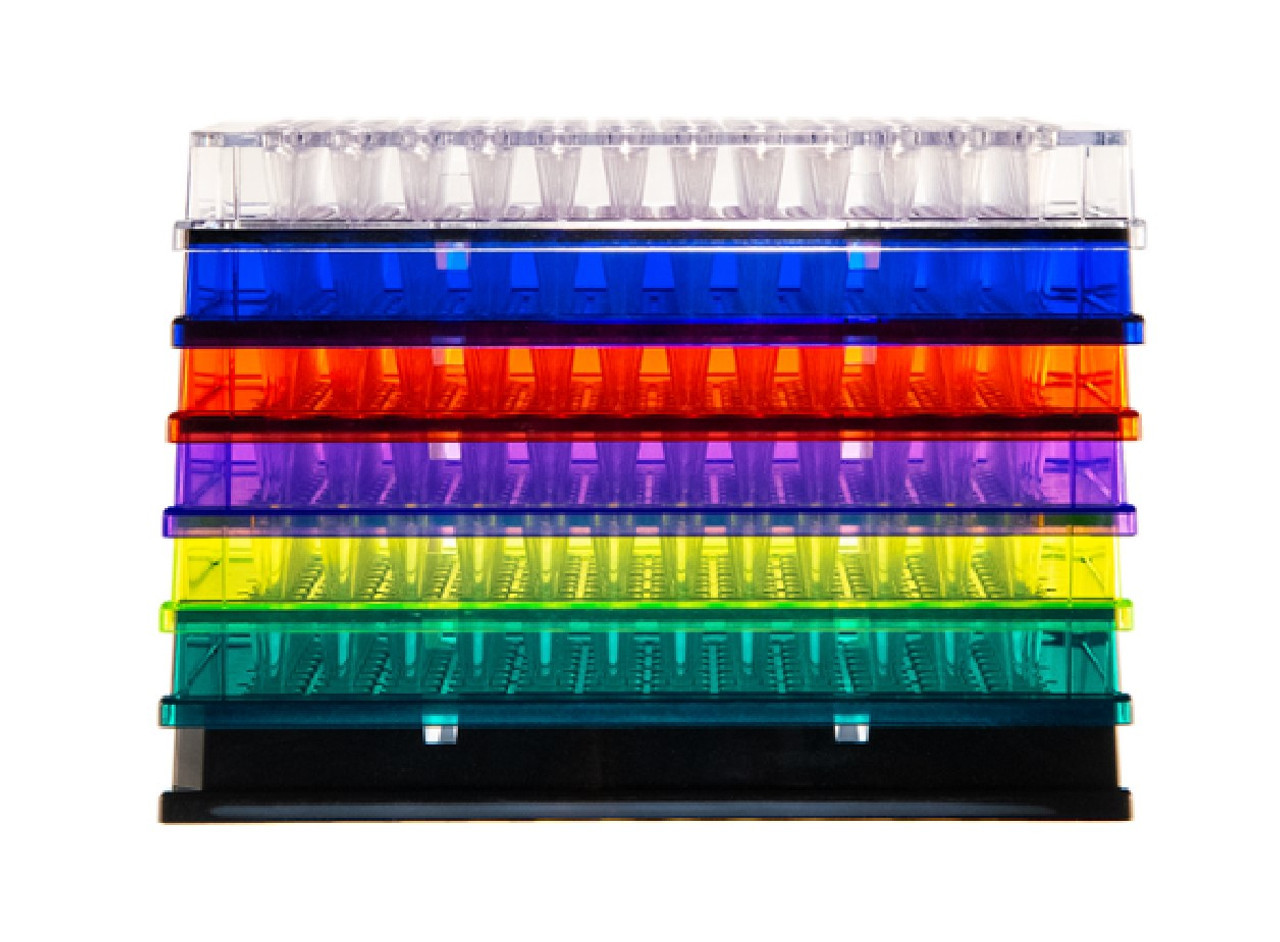Choosing a PCR plate isn't always easy
Modern laboratories use so many types of PCR that it’s easy to get confused- hot start, real time, multiplex, etc.
There are so many variations now and different ways of running them.
However, if you plan to run any PCR protocol using a robotic handler, there is one particular concern, and this is whether or not your plates are thermostable.
Let’s say this is your first time running a PCR protocol beyond the most basic. Do you know everything you need to know about selecting PCR plates, or are you still living in the dark ages about your plastics?
Unpacking PCR plates, going back to the basics…
How do I choose a PCR plate?
PCR plates come in dramatically different styles, but it might not be obvious that there is a reason.
No, it’s not just about image–The height of the plate plays a role in whether or not a plate is suitable for your experiment, as higher temperatures may lead to sample loss through evaporation.
Another factor to consider when choosing a plate for your PCR experiments is skirt style, which can affect PCR accuracy and the efficiency of robotic handlers.
Most suppliers carry plates that fit any modern thermocycler intended to run a 96-well experiment, but here’s what you need to know:
What are the common types of PCR plates used?
High-profile vs. low-profile plates
It’s less complicated than the intrepid names imply! High-profile and low-profile PCR plates simply differ in the height of their sample wells.
Low-profile wells reduce the amount of air and condensate inside of the tube and can increase the accuracy of the readings.
High-profile plates: The wells are roughly 0.2 ml volume and leave space over top of a PCR reaction mixture.
Low-profile plates: These wells are roughly 0.1 ml volume less than the older high profile wells.
The good news is, labs that have chosen automated handling devices for their PCR experiments don’t have to worry about complicating things by using shorter tubes. That’s a human thing!
What are skirted vs. unskirted plates?
What on earth is a plate skirt, do you ask? Plate skirts are a rigid shelf of plastic, or flange, that is built in on the edge of a PCR plate.
Much like Buzz Lightyear’s space suit, the plastic accouterments you see on some PCR plates are just there to increase rigidity and make handling them easier.
Unskirted plates: Lack a skirt or flange, making them cheaper and less stable than other plates, but may be a better choice for smaller scale experiments where you might want to cut and move around samples.
Semi-skirted plates: A skirt or flange that does not cover the full length of the tubes. These are rigid and easy to grip.
Full-skirted plates: A skirt that covers the full length of the tubes and provides a rigid surface for robotic handlers.
Plastic colors and plate reader accuracy
Even tube color can influence your data because of light interference. Sometimes getting great results isn't pretty!
Clear: Clear plastic is the standard plastic color used in most laboratories, but these tubes tend to have higher signal refraction rates because they are shiny, and produce less consistent results.
White: White plastic reduces refraction and improves the signal-to-noise ratio because it prevents light refraction.
White plastic is a good way of sorting out your issues if your PCR runs are producing weak looking curves and you know the problem isn’t your reaction.
Colorful: Colorful plastics should never be used for the PCR tubes themselves because it would cause interference, but colorful plates can help organize samples for high-throughput experiments.
What is a Hardshell PCR plate, and when should I use one?
Hardshell PCR plates differ from traditional PCR plates in the kind of polymer used for their construction. They are made of a dual polymer that resists stress during thermal cycling.
Thinner plastics may produce faster PCR reaction times, but because they crumple and distort in high heat, protocols that rely on a robotic handler may run at lower efficiency.
Hardshell PCR plates are made of thermostable polymers
Stellar Scientific carries top-of-the-line hardshell PCR plates that combine thin-walled polypropylene tubes and a heavy-duty polycarbonate shell.
Even if your lab is not running fully-automated PCR yet, our REEBO Rigid™ Hardshell PCR Plates and RoboReady™ Rigid Frame plates may suit your research needs.
What types of hardshell PCR plates are available?
Stellar Scientific carries REEBO Rigid™ Hardshell PCR Plates for all of your PCR needs. REEBO Rigid™ Hardshell PCR Plates are available in high-profile 0.2ml well and low-profile 0.1ml well format.
REEBO Rigid™ Hardshell PCR Plates come in a variety of skirt types and colors to help you organize and streamline your experiments.
Choose a full-skirted plate to facilitate the most ease of handling for a robotic handler, or choose semi-skirted plates if you need a shell for added grip, but want to be able to see your samples in the wells after you pipette them.
These plates are all RNAse and DNAse free, and made to fit any type of modern thermocycler that uses a 96-well format.
REEBO Rigid™ Hardshell PCR Plates plates come available with seven different shell colors, and all have clear plastic wells to help you avoid interference in your readings.
As a simpler alternative to REEBO Rigid™ Hardshell PCR Plates, Stellar Scientific also carries MTCbio’s RoboReady™ Rigid Frame plates.
If you are struggling to produce consistent results, RoboReady™ Rigid Frame plates offer a white plastic well option to help correct poor signal-to-noise ratios in your readings, and they also come available in 96-well and 384-well format.
Suppose you’ve decided that you don’t need a hardshell PCR plate just yet… Stellar Scientific also offers a variety of traditional PCR products for your lab’s specific needs.
Our standard PCR supplies offer a lower cost way to troubleshoot and run manual PCR protocols.


